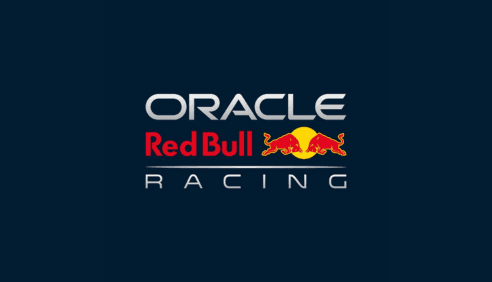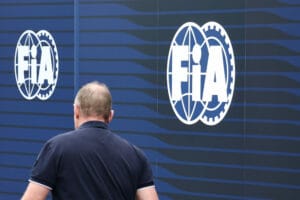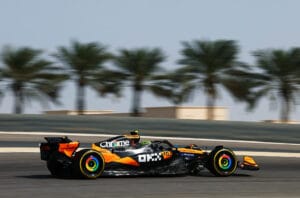The journey of Red Bull in Formula 1 is a tale of transformation from a party team to a championship team. When the energy drink manufacturer entered the sport in 2005 for a nominal fee – Red Bull founder Dietrich Mateschitz purchased the Jaguar team for a symbolic amount of 1 pound – it seemed to the outside world that the primary focus was on storytelling.
These were cool, tough, beautiful stories, as Red Bull appeared to use Formula 1 primarily as a marketing platform. It offered fans, followers, and VIPs unprecedented behind-the-scenes access, even in the paddock, while throwing the best and wildest parties and performing unparalleled stunts and demos with its Formula 1 cars.
From Fun to Podiums
Red Bull was the rebel, the new kid on the block, but behind all the outward show, the ambition burned – an ambition that may have been underestimated by other teams amidst all the partying. Mateschitz, although never a top athlete himself, is a born winner who wants to be the best in everything he does. He shares this vision with Helmut Marko, who manages the racing stable as his right-hand man, along with team boss Christian Horner. The fact that sporting ambitions can still go hand in hand with having fun is underscored by Red Bull when driver David Coulthard secures the first podium finish in Monaco in 2006 – and he stands on the rostrum in a cape to promote the new Superman movie. Team boss Horner also makes a splash by jumping into the pool of Red Bull’s floating and party-rocking Energy Station, clad only in a Superman cape.
Quartet of Championships for Red Bull Racing
Coulthard’s most significant achievement during Red Bull’s early years is his successful luring of Adrian Newey from his old employer, McLaren. The British design genius creates his first superior Red Bull for the 2009 season, with Sebastian Vettel and veteran Mark Webber at the wheel, laying the foundation for the upcoming period of success. The concept of 2009’s RB5 is largely the basis for the RB6 to RB9, with which Vettel wins four consecutive world titles between 2010 and 2013. Red Bull completes the celebration with a quartet of constructor titles. It’s not always easy, with Vettel having to contend with teammate Webber – including a charged collision in Turkey – as well as Fernando Alonso and Lewis Hamilton, but there are a number of dominant years for Vettel and Red Bull.
The Beginning of the Hybrid Era
The start of Formula 1’s hybrid era marks the temporary end of Red Bull’s hegemony. The Renault engine in the cars falls short and often proves unreliable. When Vettel leaves for Ferrari at the end of 2014, it’s a significant loss for Red Bull. However, talent scout Marko has already spotted a new star: a certain Max Verstappen, who is racing in Formula 3. After his debut year with Toro Rosso in 2015, Marko believes Verstappen is ready for the big leagues early in 2016. In his very first race for Red Bull, in Spain, the Dutchman secures his first victory. Although Daniel Ricciardo, a cheerful, popular, and fast driver, is in the other Red Bull, Verstappen’s immense talent sees him emerge as the team’s leader in the following years.
A Golden Move
As Verstappen proves himself a revelation, Red Bull remains second best in the Mercedes era, much to the dissatisfaction of Marko and Mateschitz. The team has to settle for occasional victories, with a serious title challenge out of reach. Multiple threats to quit if the rules don’t change have no effect. However, one person who does walk away, as team boss Horner sees it, is Ricciardo. After a collision in Baku in 2018 reminiscent of the one between Vettel and Webber in Turkey 2010, Ricciardo knows the score. Verstappen is the man for Red Bull, and the Aussie departs for Renault, just as Red Bull swaps the French manufacturer’s engines for Honda’s in 2019 – a move that turns out to be golden.
Champion Verstappen
It’s a two-year wait, but in 2021, Red Bull definitively returns to the front. The RB16B, still designed by Newey, proves to be a hit, and the Honda engine proves to be a reliable and fast power source. A sensational titanic battle between Lewis Hamilton and Max Verstappen ensues. With a decisive overtaking move in the final lap of 2021’s controversial season finale, Verstappen crowns himself the new champion and king.
In 2022, Red Bull is in a class of its own. Although Mateschitz passes away in the fall of 2022, he still witnesses Max Verstappen dominantly securing his second title. In total, Verstappen achieves fifteen victories in 2022, a Formula 1 record. But the hunger for success is not yet satisfied. In 2023, the victory streak continues mercilessly, with the team winning all races in the first half of the season. No one seems to be able to compete with the Dutchman behind the wheel of the RB19, not even teammate Sergio Pérez.
| Red Bull Racing | |
| Team Boss | Christian Horner |
| Technical Director | Adrian Newey |
| Chief Designer | Pierre Waché |
| Test Drivers 2024 | Liam Lawson |
| Location | Milton Keynes (Eng) |
| GP Debut | GP Australia 2005 |
| Driver Titles | 7 (2010, 2011, 2012, 2013, 2021, 2022, 2023) |
| Constructor Titles | 6 (2010, 2011, 2012, 2013, 2022, 2023) |
| Final Standings 2023 | 1 |
| Max Verstappen #1 | |
| Nationality | Dutch |
| Date of Birth | September 30, 1997 |
| GP Debut | Australia 2015 |
| World Titles | 3 (2021, 2022, 2023) |
| Final Standings 2023 | 1 |
| Sergio Pérez #11 | |
| Nationality | Mexican |
| Date of Birth | January 26, 1990 |
| GP Debut | Australia 2011 |
| World Titles | 0 |
| Final Standings 2023 | 2 |







